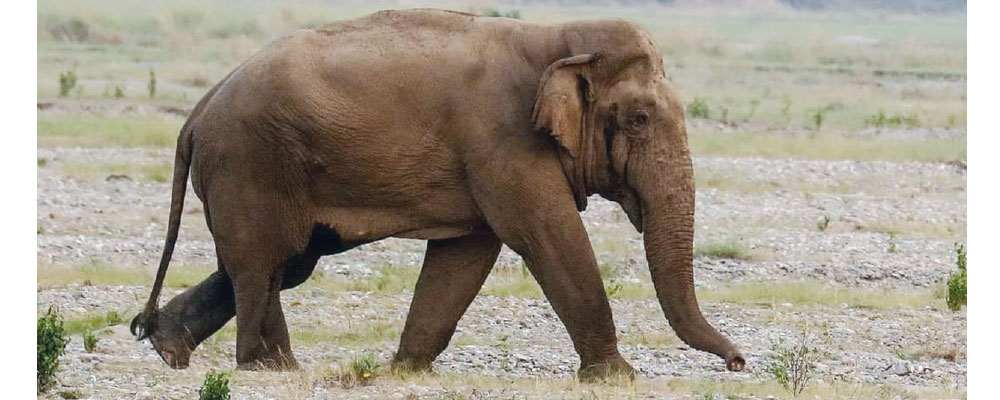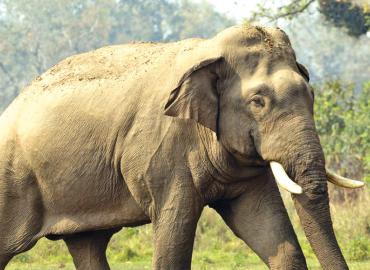Damak, Aug. 28: Efforts have begun to plant fruit-bearing trees to establish an elephant-friendly habitat along the elephant corridor area in Jhapa.
The ever-increasing arrival of elephants from India has led to a significant surge in human-elephant conflicts, posing a substantial threat to people and property in Jhapa.
Jeevan Pathak, an officer at the Division Forest Office in Jhapa, said that activities have been started to mitigate conflicts between humans and wild elephants and other animals in the areas badly affected by elephant rampages.
These efforts involve the cultivation of elephant-friendly fruit plants in the forests. Currently, only 10 to 15 elephants are able to find food within these elephant-affected zones, he added.
He pointed out that elephants venture into human settlements due to the scarcity of food within the forests. In the past, elephants would arrive from India in smaller groups of two or four, but now, the number has increased to as many as 200 elephants at once. He emphasised that if immediate attention was not paid to this issue, there was a risk of encountering more problems in the future.
Pathak stressed that adopting elephant-friendly practices within the forests located in the elephant corridor can help minimise both human and infrastructural damage. The Division Forest Office, in collaboration with different community forests, is actively involved in planting a variety of trees mango, banana, bamboo, guava, and other plants that elephants find palatable. “We have seen elephants arriving in a weakened state due to lack of food,” he added.
Numerous endeavours have been undertaken to mitigate the human-elephant conflict in the Bahundangi area of Mechinagar Municipality, which is particularly impacted by elephants.
Arjun Karki, Chairman of Ward No.4 of the municipality, said that initially, people used to feel strange when discussing the concept of elephant-friendly practices to address the human-elephant conflict. However, of late, there has been a noticeable shift in the attitude of the local residents towards ensuring sustenance for elephants and creating forests that are accommodating for the animals.
There is a growing consensus that facilitating easy movement for elephants and providing them with food sources can effectively minimise the extent of damage when they enter human settlements.
According to Karki, the main problem arises from encroaching on the elephants’ habitat, which leads to conflicts when they interact with human settlements. “It is crucial to recognise this and find solutions to the challenges we
have created ourselves,” he added.
To mitigate the human-elephant conflict, Karki has long advocated for the establishment of a green belt on either side of the Mechi River, equipped with the elephants’ preferred food sources. Recog
nising that this is a shared issue affecting both Nepal and India, he strssed the necessity for both countries to actively address and resolve the matter.
Shanti Upadhyay Ghimire, the Chairperson of Sukedangi Community Forest, said that she has been leading efforts to consistently plant bananas, bamboo, and other vegetation on the forest premises for the past two years. With the objective of deterring elephants from entering settlements in their quest for food, they are actively involved in cultivating elephant-friendly plants, she added.
The establishment of an elephant corridor in Jhapa has been initiated, but its successful execution and progress have not been realised fully. In an effort to minimise the ingress of Indian elephants into Nepal, various measures are being undertaken, including the installation of electric fencing wires and the construction of dams. The problem of elephants has also become a key electoral agenda in areas affected by elephant activities.-The Rising Nepal






















